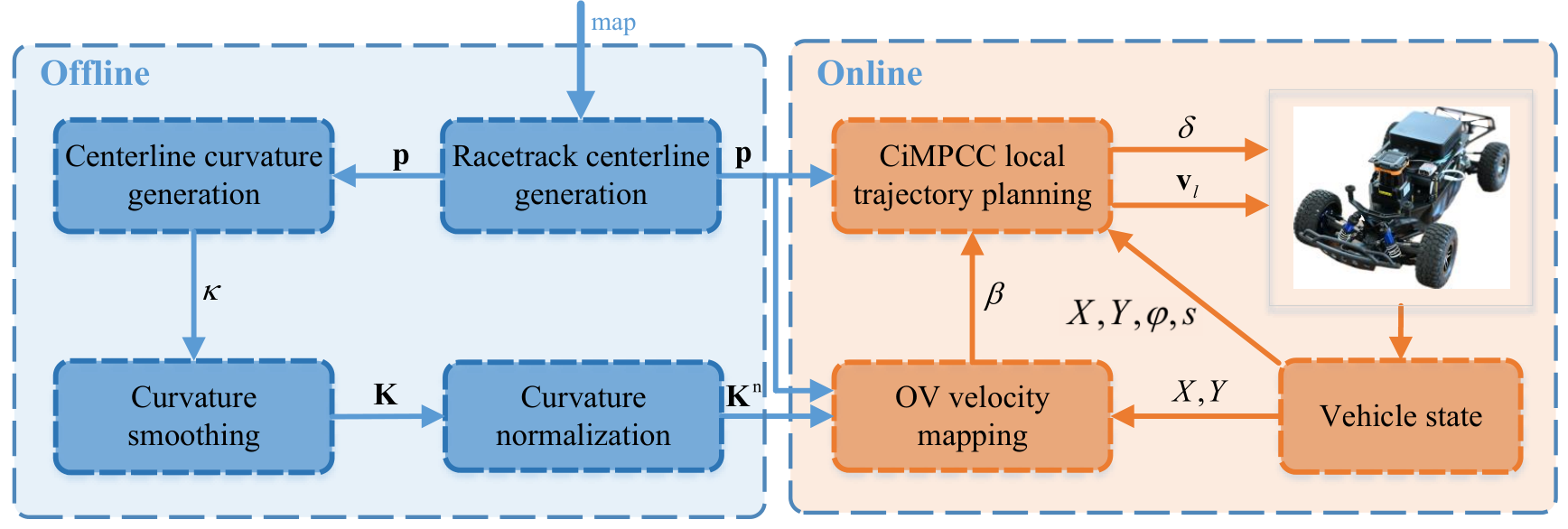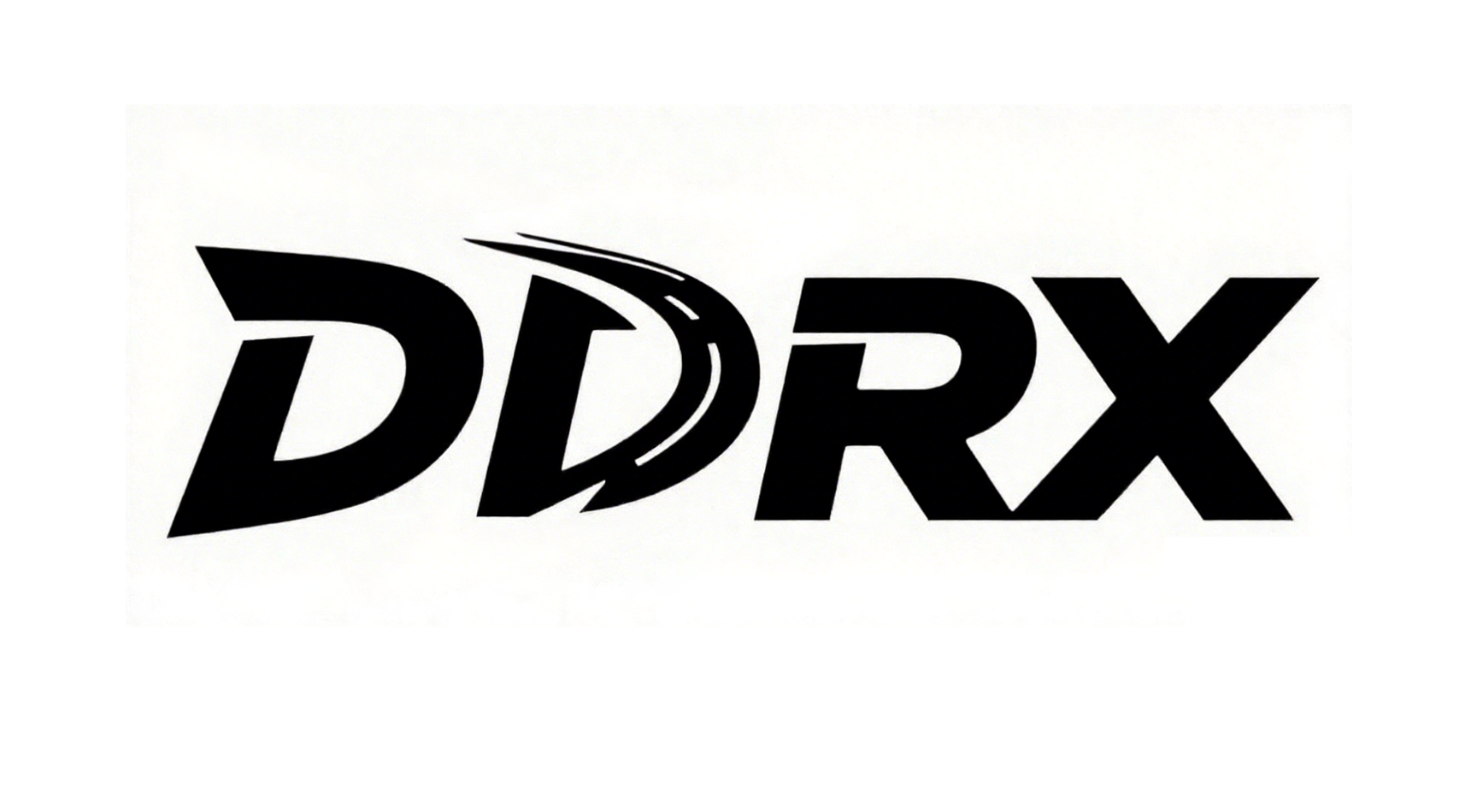Abstract
The widespread application of autonomous driving technology has significantly advanced the field of autonomous racing. Model Predictive Contouring Control (MPCC) is a highly effective local trajectory planning method for autonomous racing. However, the traditional MPCC method struggles with racetracks that have significant curvature changes, limiting the performance of the vehicle during autonomous racing. To address this issue, we propose a curvature-integrated MPCC (CiMPCC) local trajectory planning method for autonomous racing. This method optimizes the velocity of the local trajectory based on the curvature of the racetrack centerline. The specific implementation involves mapping the curvature of the racetrack centerline to a reference velocity profile, which is then incorporated into the cost function for optimizing the velocity of the local trajectory. This reference velocity profile is created by normalizing and mapping the curvature of the racetrack centerline, thereby ensuring efficient and performance-oriented local trajectory planning in racetracks with significant curvature. The proposed CiMPCC method has been experimented on a self-built 1:10 scale F1TENTH racing vehicle deployed with ROS platform. The experimental results demonstrate that the proposed method achieves outstanding results on a challenging racetrack with sharp curvature, improving the overall lap time by 11.4%-12.5% compared to other autonomous racing trajectory planning methods. Our code is available at https://github.com/zhouhengli/CiMPCC.

Contributions
1. A practical method for integrating the curvature into optimization problems. The curvature of the racetrack centerline is smoothed and normalized to integrate into the optimization problem of the CiMPCC method. It is utilized to optimize the velocity of the planned local trajectory, particularly in sharp and changing curvature sections of the racetrack, leading to reduced lap time.
2. A novel mapping method between curvature and velocity. The designed mapping function maps the normalized curvature of the racetrack centerline to reference velocity. It effectively optimizes the velocity in the planned local trajectory to increase the mean velocity of a lap, thereby reducing lap time. The CiMPCC method improves the mean velocity by 14.9%-17.3% and reduces lap time by 11.4%-12.5% compared to other autonomous racing methods.
3. The well-established and reliable actual vehicle experiments. The CiMPCC method is validated using a self-built 1:10 scale autonomous vehicle, which completes autonomous racing on a challenging racetrack. Despite the constraints of limited computational resources and delayed execution, the proposed CiMPCC method achieves impressive mean velocity and lap time.
